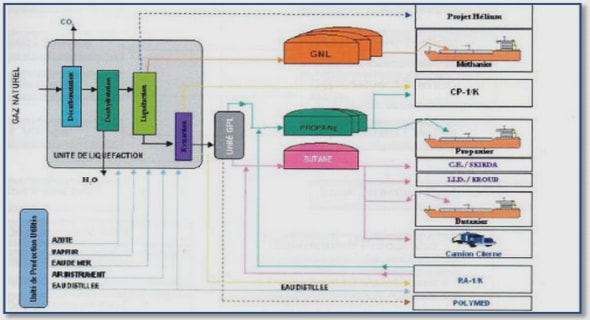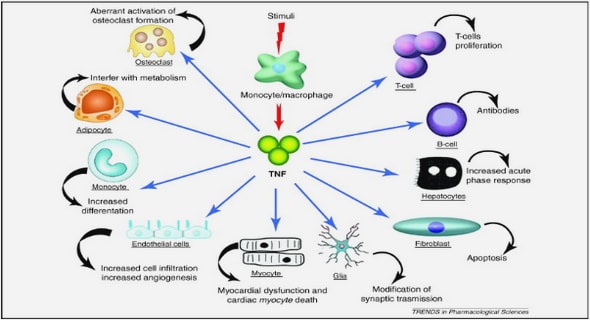Get Complete Project Material File(s) Now! »
Research Method and Design
The study used an ex-post facto research design and a mixed methods research approach to collect and analyze both quantitative and qualitative data from Grade 10 physical science learners with regard to solving chemistry tasks using sub-microscopic representations.
The ex-post facto research design in this study implies that the independent (formal teaching) and dependent (formal learning) variables have already occurred. Ex-post facto research is a systematic empirical inquiry in which the scientist does not have direct control of independent variables because their manifestations have already occurred and they are inherently not manipulated. Inferences about relationships among variables are made, without direct intervention and this kind of research design is based on a scientific and analytical examination of dependent and independent variables. Independent variables are studied in retrospect for seeking possible and plausible relations and the likely effects that the changes in independent variables produce on a single or a set of dependent variables. The investigation started after the fact had occurred without interference from the researcher.
A mixed method research approach was used because primary data was quantitative while secondary data was qualitative. Learners’ quantitative scores were used to determine their level of achievement whereas reasons (justifications) and verbal explanations (focus group discussions) for their choice of responses were used to assess their understanding of chemical concepts. Justifications were also scored alongside the achievement scores. The qualitative data were derived from written (justifications) and verbal explanations (interviews) that the learners gave in support of their responses to answers in the test of basic chemical knowledge (TBCK). Data from teachers’ interviews augmented qualitative data derived from learners’ interviews and this served as data triangulation.
A mixed method research approach is a fairly new design and researchers need to understand what it entails. Research (Creswell, Plano Clark, Gutmann, & Hanson, 2003) defines the approach as“the collection or analysis of both quantitative and qualitative data in a single study in which the data are collected concurrently or sequentially, are given a priority, and involve the integration of the data at one or more stages in the process of research”. Researchers may enrich their results in ways that one form of data does not allow when both quantitative and qualitative data are included in a study (Brewer & Hunter, 1989; Tashakkori & Teddlie, 1998). The term “mixed methods” is self-explanatory, referring to the mixing of the two traditional paradigms, namely, quantitative and qualitative methods. Using both forms of data, for example, allows researchers to simultaneously generalize results from a sample to a population and to gain a deeper understanding of the phenomenon of interest (Hanson, Creswell, Plano Clark, Petska, Creswell, 2005) and this also allows researchers to test theoretical models and to modify them based on participant feedback. Thus, instrument-based measurements results which are precise, may, likewise, be augmented by contextual, field-based information (Greene & Caracelli, 1997).
For the purposes of this study, a definition that draws from literature (Brewer & Hunter, 1989; Greene & Caracelli, 1997; Tashakkori & Teddlie, 1998; Hanson, Creswell, Plano Clark, Petska, Creswell, 2005) has evolved. The design is therefore defined as follows:
Mixed methods research is a design that employs methods of inquiry with certain philosophical assumptions. It is both a method and a methodology (Creswell and Plano Clark (2007). As a method, it draws attention to collecting, analysing and mixing the two traditional quantitative and qualitative paradigms and as a methodology; it has philosophical assumptions that guide collection and analysis of data and the integration of quantitative and qualitative paradigms at different stages during the research process. As a mixed methods research design, it provides an opportunity to reveal that which cannot be revealed by either quantitative or qualitative paradigms alone and its basic premise is that the combination provides a better understanding of research problems than either approach by itself (Creswell, 2005). It is a design that minimises the weaknesses of either of the paradigms.
In view of the above stated definition it can be concluded that the separate strengths and weaknesses of quantitative and qualitative approaches complement one another, making them suitable for use together (Brewer & Hunter, 1989; Mangen, 1995; Rank, 1996; Hendrickson Christensen & Dahl, 1997) and this also enhances the validity of findings by obtaining similar results from each method employed (Rank, 1996; Perlesz & Lindsay, 2003; Greene, 2005). In addition, it can also be argued that mixing methods allows researchers to challenge conventional wisdom by uncovering discordant data and confronting discrepancies (Rank, 1996; Perlesz & Lindsay, 2003; Greene, 2005). Advantages (its value) seem to outweigh the disadvantages (potential difficulty) in this methodological approach.
In conclusion, a mixed methods research design can be said to have the following characteristics, hence the choice of it in this study:
• It provides strengths that offset the weaknesses of both qualitative and quantitative research.
• It provides more comprehensive evidence for studying a research problem either quantitative or qualitative research alone.
• It helps answer questions that cannot be answered by quantitative or qualitative research alone.
• It encourages researchers to collaborate across what appears to be antagonistic relationship between quantitative and qualitative researchers.
• It encourages the use of multiple worldviews or approaches rather than associating certain approaches to quantitative researchers and others to qualitative researchers.
• It is practical as the researcher is at liberty to use all methods possible to address a research problem.
• Its value exceeds its difficulty in carrying it out. It is usually expensive and takes very long to collect and analyse both quantitative and qualitative data.
It is against this background that the researcher of this study chose a mixed methods research design as it reasonably appears to be both a flexible method and methodology.
Population and Sample
The population for this study was Grade 10 beginner physical science learners (1215) in Tshwane North District (D3)’s township secondary schools (27) in 2013. Grade 10 physical science marks the entry point into a three-year physical science preparation for the National Senior Certificate examinations, hence the choice of learners that completed grade 10. The sample was made up of a total of 280 learners (23%) in their intact classes. Stratified and purposive sampling procedures were used. Stratified sampling would ensure equal representations of all abilities. Purposive sampling (Tshwane North District Schools), was used as the schools were the majority of the under resourced schools in Tshwane as a whole, and also partly because the researcher was working in the same district. The sample comprised high, (70% to 100% or levels 6 and 7), average (50% to 69% or levels 4 and 5) and low (0% to 49% or levels 1, 2 and 3) performing schools that had been offering National Senior Certificate examinations for the period 2005-2009.
Firstly, the 27 schools were identified and categorized in terms of whether they had been offering Grade 12 National Senior Certificate Examinations in physical science in the last five years (2005-2009) and then secondly using Grade 12 physical science results (performance) in 2009. Five (5) schools were categorized as high performing, seven (7) schools as average performing and fifteen (15) schools as low performing schools. The first criterion used (offering grade 12 National Senior Examinations for at least past 5 years) was to ensure consistency regarding grade 12 physical science results. Performance was chosen as the second criterion as the study was prompted by poor performance by grade 12 candidates in physical science, especially in 2009. Three strata (high, average and low performing schools) were determined and random sampling was then used to select two schools from each stratum. Each school selected had either at least 45 (one class) physical science learners or at most 135 (three classes). The number of learners taking physical science per school was not very important as the research is based on reasoning by individual learners. It is policy in South Africa that no learner should be discriminated against taking physical science and therefore no streaming is practiced in Tshwane North District schools. All classes selected were mixed ability classes.
CHAPTER 1 Introduction and Background
1.1 Background
1.2 Statement of the Problem
1.3 Research Questions
1.4 The Rationale of the Study
1.5 Significance of the Study
1.6 Delimitations and Scope of the Study
1.7 Definition of Terms
1.8 Summary
CHAPTER 2 Review of Related Literature
2.1 Learning Difficulties in Chemistry
2.2 Sub-microscopic Representational Models
2.3 Concept Development
2.4 Conceptual Change
2.5 Evaluation of Chemistry learning
2.6 The Conceptual Framework
2.7 Summary
CHAPTER 3 Research Methodology
3.1 Research Informants
3.2 Research Context
3.3 Research Method and Design
3.4 Population and Sample
3.5 Research Instruments
3.5.1 Test of Basic Chemical Knowledge (TBCK)
3.5.2 Focus Group Discussions (FGD)
3.5.3 Teacher Interviews
3.5.4 Document analysis
3.6 Scoring procedure for research instruments
3.7 Data Collection
3.8 Data Analysis and Interpretation
3.9 Reliability
3.10 Validity
3.11 Pilot testing of the instrument
3.12 Ethical Considerations
3.13 Summary
CHAPTER 4 Data presentation, analysis and interpretation
4.1 Data presentation (n=280)
4.1.1 Overall Task (TBCK) Analysis, interpretation and discussion s
4.1.2 Task item analysis, interpretation and discussion (n=55)
4.1.2.1 Data presentation and analysis (n=55)
4.2 Summary of Data Presentation
4.3 Focus group discussions (FGD)
4.4 Teacher interviews
4.5 Document Analysis
4.6 Summary of results
CHAPTER 5 Discussions, Summary and Recommendations
5.1 Discussions
5.2 Summary
5.3 Conclusion
5.4 Limitations of the study
5.5 Contribution to Knowledge
5.6 Recommendations and Implication for Chemistry Education
REFERENCES
APPENDICES
GET THE COMPLETE PROJECT
GRADE 10 PHYSICAL SCIENCE STUDENTS’ REASONING ABOUT BASIC CHEMICAL PHENOMENA AT SUBMICROSCOPIC LEVEL

